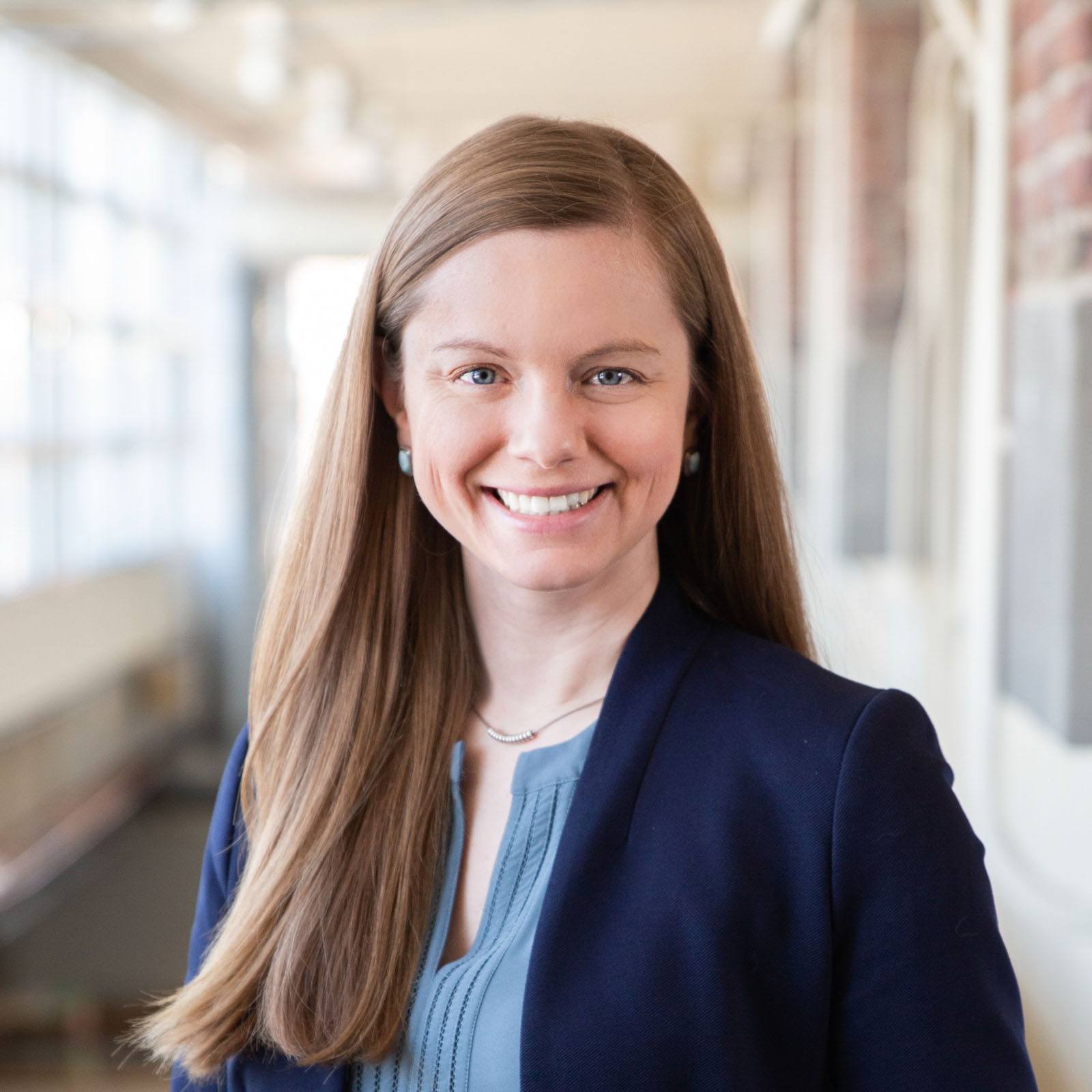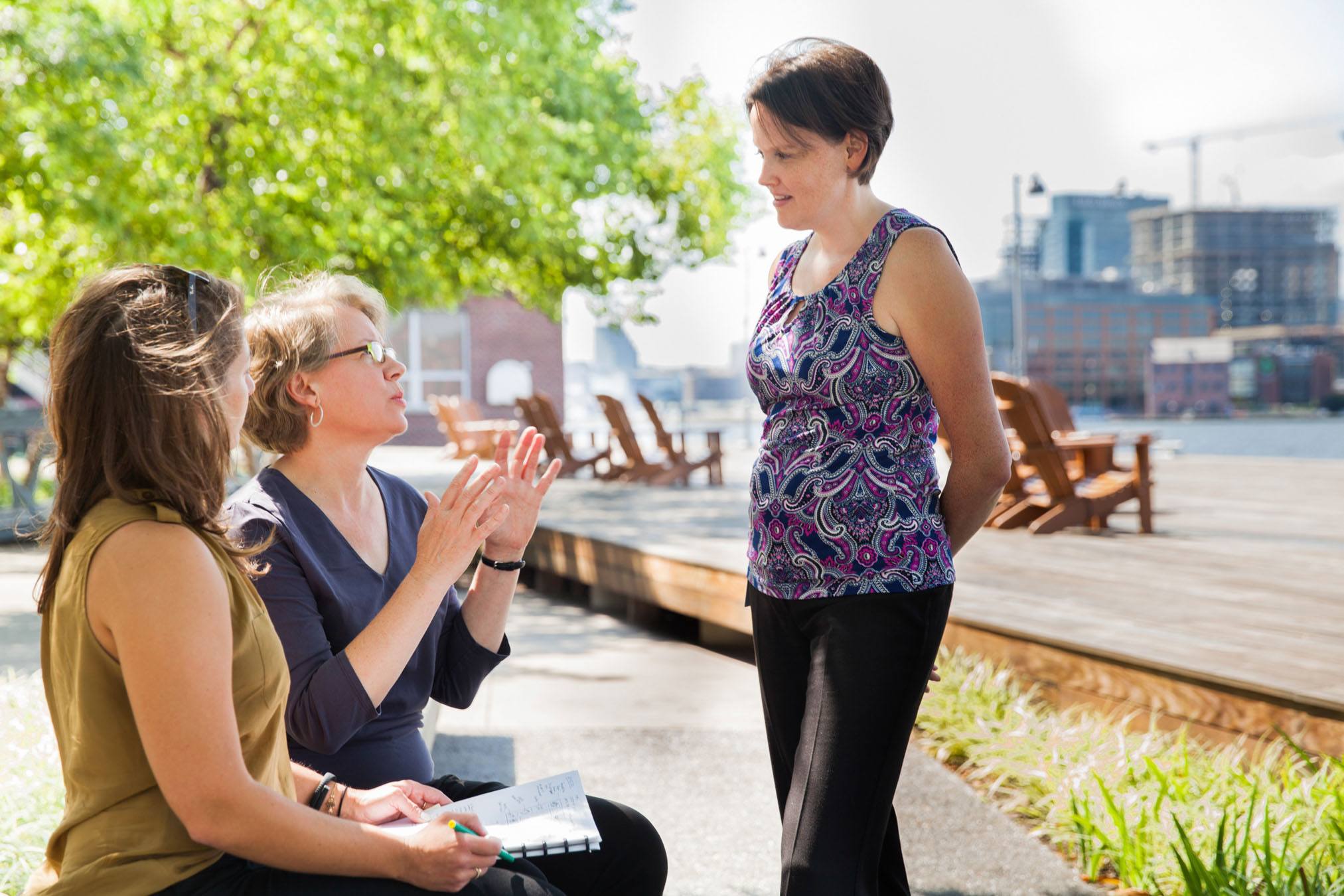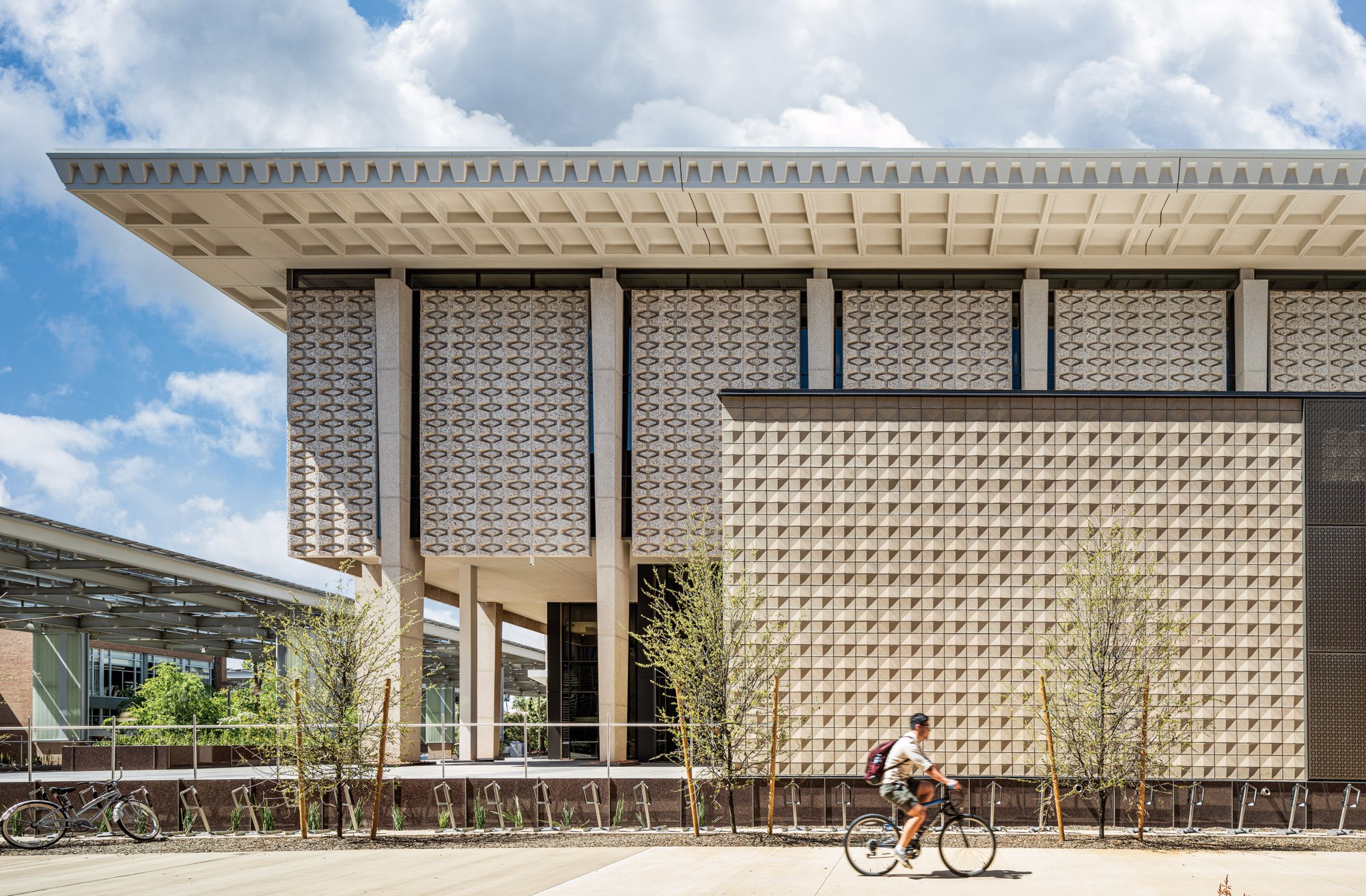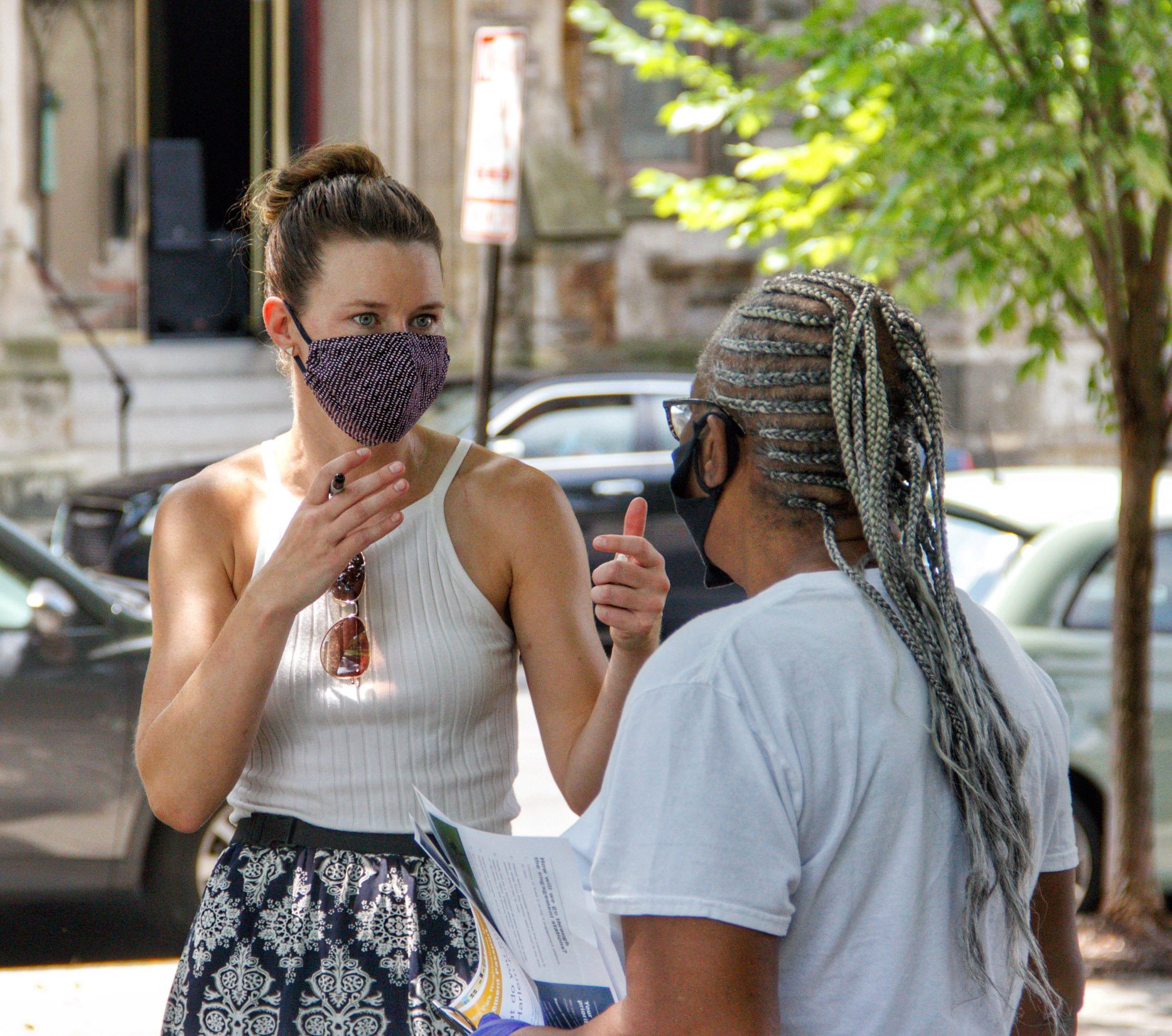Laura Wheaton, AIA, LEED AP BD+C joined the planning studio at Ayers Saint Gross in March of 2020. Previously she managed the Baltimore Community Design Works program at the Neighborhood Design Center. Laura recently began her tenure as the president of American Institute of Architects (AIA) Baltimore chapter. Here she reflects on how she got into planning, some of the biggest issues facing the world of design right now, and her plans for her presidency.
Can you speak about your career trajectory and how you became a planner?
I’m trained as an architect and early in my career, I worked in Chicago for a few different architecture firms. In my free time, I began volunteering with the Chicago chapter of Architecture for Humanity, which did pro bono design work in local communities separate from the well-known work of the main organization. It was an all-volunteer chapter basically running on beer and pizza (that we bought ourselves). By the time I left I’d been elected volunteer co-Director leading the chapter with some fantastic fellow architects, and we had been awarded some of our first grant funding.
My husband’s work brought us to Baltimore in early 2013, and I discovered the Neighborhood Design Center. They needed a program manager and I jumped at the chance. For six years I ran the Community Design Works program in Baltimore City and organized volunteers to provide conceptual design assistance for community-initiated projects and consulted with other nonprofits on their initiatives. So many of those projects were landscape projects, planning projects, and multidisciplinary work, rather than traditional architecture projects. I got a broad understanding of the continuum of design within the built environment and further developed my passion for talking with and learning from people about how the built environment impacts their daily life.
Later, when I saw there was an opening in the Planning Studio at Ayers Saint Gross, I saw there was a lot of similarities to what I had been doing with the Neighborhood Design Center, only working with higher education. Colleges and universities are stewards of land and facilities and anchors in communities. That makes for a wonderful alignment where our clients are invested in the long-term, and together we can explore how best to position their physical campus for both the near and distant future. We get to engage diverse campus communities in these conversations, and I love thinking about how we can facilitate those discussions.
You joined the firm in March 2020, right before the world went into lockdown for COVID-19. What has your adjustment been like?
I was surprised by how quickly I felt a part of the studio, even while all the people with whom I was interacting were in these little Zoom boxes. At the same time, the firm was exploring how we could best pivot to entirely virtual engagement. I had some free time while onboarding and ended up becoming the firm’s MURAL champion, a virtual whiteboard software we now use for both internal collaboration and stakeholder engagement.
Another thing that helped was that right away I was put in charge of managing the 2020 Comparing Campuses poster. Through that I was able to collaborate with so many different people within Ayers Saint Gross and learn from them. It struck me how positive the people who work here are in their daily interactions with each other. This is a place where it is not uncommon to see people cheering each other on in their work. That is telling about the strength of the culture here, even over Zoom screens.
How did you get involved in AIA? What do you find most rewarding about your involvement?
I was first involved in AIA through the AIA Chicago Bridge Program, which pairs young architects with AIA fellows as a way of providing mentorship. When I moved to Baltimore, CivicLAB was a great way to get to know the local architecture community. Through that, I met many architects here who have made advocacy a theme in their career. It was an exciting introduction to the potential of AIA as this broad network of resources and members who each have a deep well of local knowledge and experience.
I began collaborating with AIA Baltimore through my work at the Neighborhood Design Center. I was elected to the board in 2017, and in 2019 I was invited to start the five-year executive track. One serves a year each in five different roles: treasurer, secretary, president-elect, president, and immediate past president. This cycle is valuable because not only do you know the commitment going in, but each role gradually prepares you for that highlight year of service.
What motivated you to get involved in AIA leadership and why do you think it’s important to serve in positions like this?
The myriad programming and events offered by AIA Baltimore was inspiring, and I wanted to do my part to pitch in. We just opened The Center for Architecture and Design, and we hope it will become a new cultural institution for Baltimore. That kind of thing doesn’t happen without the efforts of so many people within AIA Baltimore over years as well as our several amazing partner organizations. Having the opportunity to be of service in this capacity is a privilege, and when you get a request to step into this kind of leadership role it is hard to say no. I had a 3-year-old and a 8-month-old when they asked me to join the executive track. The timing could have been a little difficult, but it has worked out well.
What are your goals for your year as president?
My primary focus has been supporting our stellar staff during a leadership transition and working with a search committee to identify our new executive director. Our previous executive director left for a new opportunity with AIA National, and we needed to hire someone with the vision and leadership to steward AIA Baltimore as well as our sister organization, the Baltimore Architecture Foundation, and The Center for Architecture and Design. These next few months will be about supporting her as she takes on her new role. I’m also hopeful we’re moving into a “next normal” where we can begin to have more in-person events and programming. We were able to do a little bit of that last year, ideally this year we can start to realize the potential of The Center for Architecture and Design as a venue for conversations about design, the built environment, and our city.
AIA Baltimore recently updated our strategic plan. We’re thinking about how we can advance JEDI in the profession and the built environment and advocate on the local level on key issues, all while maintaining our core member services.
What are some of the most important issues you feel are facing the field of architecture today?
I think it comes down to two. Thanks to the JEDI movement and an increasing understanding of racial justice and injustice, we are developing a deeper understanding of the role the built environment plays in equity. As people who design the built environment, we have a responsibility to make sure both our processes and the outcomes of our work are more equitable.
The second big issue is climate change, which is fundamentally changing where and how you can build. We need to be thinking about all this new data that changes the circumstances surrounding our buildings. In some cases, the environment a building was designed for might be quite different than its current climate. We also need to be aware of shifting community needs as we go into the future. That’s one nice thing about our firm being a nationwide practice. Because our offices are spread out, we have different perspectives on the ways climate change might affect communities, and so we can be more attuned to the needs of our clients.
What is the most rewarding part of your job?
I love experiencing the energy of talking with people who are passionate about the built environment and the impact it can have on quality of life. Whether that’s meeting with the fellow members at the AIA, collaborating with the planning studio, or talking with our clients, these conversations give me a rush.
What has been one surprising aspect of your work as an architect and planner?
I have been very fortunate to have had so many female role models within the profession. Architecture is a field still striving to achieve gender equity, especially in leadership. At the Neighborhood Design Center and at AIA Baltimore I’ve experienced great female leadership. It made it easier for me to envision myself taking on leadership roles when asked. Within the firm, it’s been fantastic working with Sally, Dana, and Jess, the leaders of my studio. I don’t know if I’m just incredibly fortunate to have found this place in my career where I’m consistently surrounded by wonderful, high-performing women, but that is something which I really appreciate.









